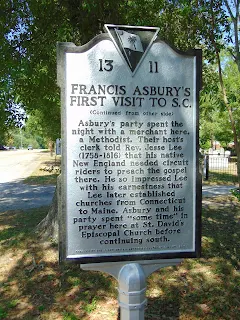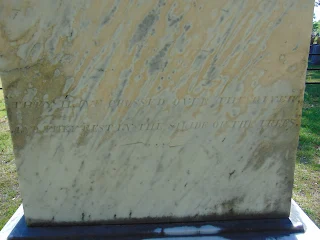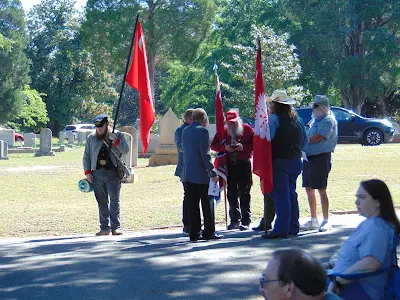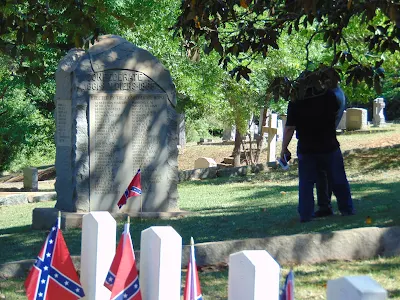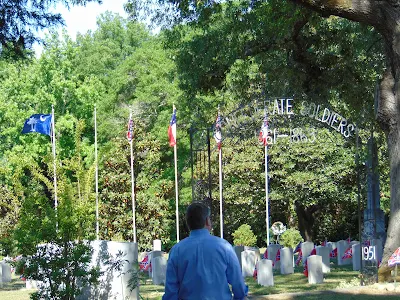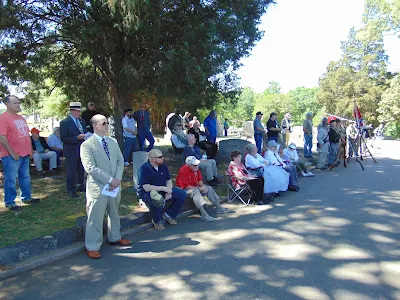
On Saturday, May 1st of this year, my travels once again took me back to Columbia, the beautiful capitol city of my home state, to take part in the annual Confederate Memorial Day service at historic Elmwood Cemetery.
This event takes place yearly and is sponsored by the South Carolina Divisions of the Sons of Confederate Veterans, United Daughters of the Confederacy, Military Order of the Stars & Bars, Children of the Confederacy, Order of the Confederate Rose, and the Palmetto Battalion Reenactors.
This service honors the estimated 26,000 South Carolina men and boys who died during the War Between The States (1861-1865) and takes place on the first Saturday of May prior to the Confederate Memorial Day State Holiday (May 10th in both North and South Carolina).
This year's service took place at the Confederate Soldiers' section of Elmwood Cemetery in the older part of the cemetery. Approximately 189 Confederate soldiers are buried here, including 54 of which marked as Unknown Soldier and 7 known only by their initials -- Known Only To God. Most of these were men from the Confederate Army of Tennessee who died in hospitals in Columbia in late 1864-1865.
The following photos were taken by yours truly attending the service in downtown Columbia at Elmwood Cemetery.
 |
Members of the famed 16th South Carolina Honor Guard
from Greenville, SC.
These men preformed the ceremonial guard of honor at the
graves of the Confederate Dead in Elmwood Cemetery
during this year's memorial service.
|
The memorial service officially begins with the arrival of the Palmetto Battalion Reenactors and the posting of the colors by the 16th South Carolina Honor Guard.
 |
Members of the South Carolina Mechanized Cavalry arrive.
|
 |
The posting of the colors.
|
 |
Mr. Perry Smith, SC Division SCV introducing the
division commanders and presidents.
|
 |
Mrs. Darlene Dowdy, President,
SC Division United Daughters of the Confederacy (SC UDC).
|
 |
Mr. Jamie Graham, Commander,
SC Division Sons of Confederate Veterans (SC SCV).
|
 |
Miss Georgia Chumley, President,
SC Division Children of the Confederacy (SC CoC).
|
 |
Mrs. Mosie Marlar, President,
SC Order of the Confederate Rose (SC OCR).
|
 |
Mr. Leland Summers, Commander,
Palmetto Battalion Re-enactors.
|
 |
Keynote Speaker Mr. Herbert O. "Bing" Chambers III.
|
The laying of the wreath by the heads of all the organizations present, escorted by the 16th SC Honor Guard. This was followed by the ceremonial firing of musket volleys over the graves of the honored dead and cannon salute.
 |
| Ready....Aim.....FIRE! |
The members of the 16th South Carolina Color Guard preforming the canteen ceremony. This is followed by the playing of Dixie and the firing of the last cannon salute.
With that the official South Carolina Confederate Memorial Day 2021 ceremony comes to an official end. On May 10th the State of South Carolina officially honor the memories of the Confederate dead during the state holiday. Graves and monuments are decorated with flags and flowers.
I hope that y'all enjoyed my photos and please let me know what you think in the comments section below. Have a wonderful Dixie day and y'all come back now, you hear!

















